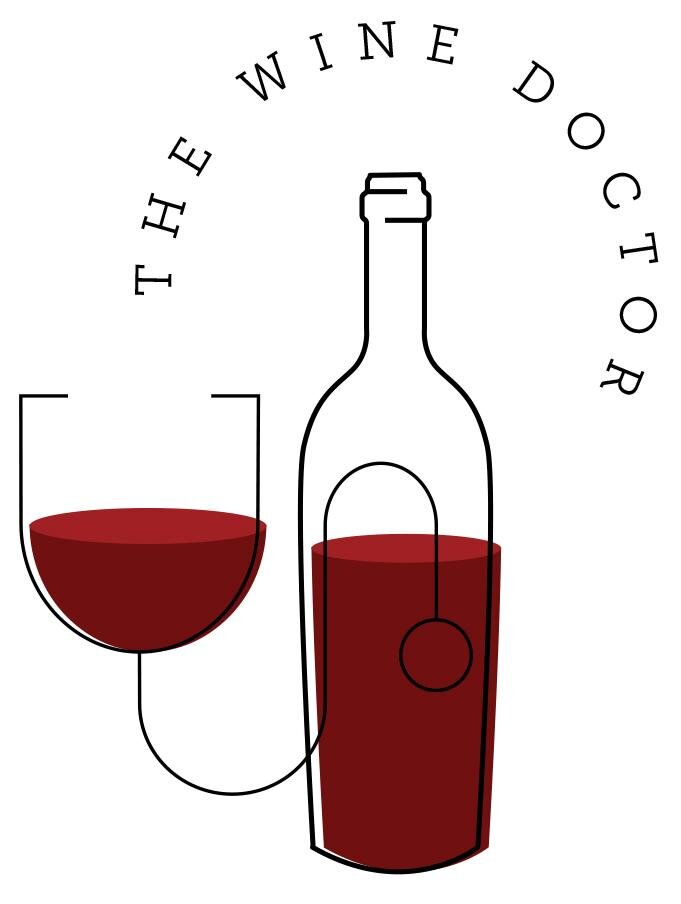Bubbles & Books
‘Tis the season for both, right? While books are popular year ‘round, they do hit their stride as gifts over the holidays. Sparkling wine, unfortunately, seems to wait all year for December before people start thinking of it. Even yours truly, who does think about sparkling wine in months other than December, needs to remember to actually buy it!
So why am I talking about books you ask? Well, the Doctor is engaging in a little bit of shameless self-promotion. As a number of you already know, I have taken the basic content of my Wine 101 page on this site and turned it into a little book! Called Wine Made Easy: Wine 101 for Everyone , I’ve added a lot of rich images and graphics (with the considerable help of my Graphic Designer Mary Tjotjos) to create an easy reading, handy reference guide.
It is available online. If you are interested, this link will take you directly to where it is on Amazon:
Ok, enough about me. Let’s get back to Bubbles!
Just about a year ago, I wrote a detailed post on sparkling wine called December Wine, part 2. In addition to profiling an Old World and a New World sparkler, I included a little summary of how these wines get their bubbles, so I won’t go over that again.
The Old World wine in that post was from France, but for price considerations, I chose something that wasn’t Champagne. It was a Cremant, made exactly the way Champagne is made, but can’t be called Champagne simply because it doesn’t come from that special region.
Well, its 2020, and haven’t we all had just about enough? So this time, we are going to Champagne! Map please…
The Champagne region is highlighted in red in the upper right box. The province is at the northern end of wine growing latitudes, resulting in cool temperatures throughout the growing season. This helps produce a high level of acidity in the grapes, making it ideal for sparkling wine. Another positive: the marine-based chalky soils, which help impart a lightness to the grapes.
The principal city in Champagne, Reims, is about 90 minutes northeast of Paris. Our journey will only take an hour, to the commune of Chateau-Thierry, situated on the Marne River. It is the third town in from the left on our map. History buffs may recognize the name: Chateau-Thierry was the site of one of the early battles fought by the Americans in World War 1.
Our Wine: I have chosen a wine from Champagne Pannier, a house founded in 1899 by Louis-Eugene Pannier. He situated the winery atop 12th century stone quarries. These serve as Pannier’s cellars, and in one of the stones the image of an archer was found, which gave rise to the house’s motto: “Aim for Perfection”.
Pannier’s caves
Pannier Brut Sélection
Some things you see (and don’t see) on this label:
The word “Brut”. As I mentioned in December Wine, part 2, this word tells you the degree of sweetness in the wine. Brut is probably the best known and best liked style of sparkling wine- a very dry style (not to be confused with “Dry” or “Extra Dry”, which are actually sweeter than Brut!).
The word “Sélection”. This refers to the winemaker’s blending of grapes to produce this bottling. On the back label, you will find that all 3 primary champagne varietals are used: Chardonnay (40%); Pinot Noir (30%); Pinot Meunier (30%).
What you don’t see is a vintage. As we know, a lot of good sparkling wine is Non-Vintage (NV). These blends are achieved by combining different vats or cuvées from different vineyards and years. In this case, Pannier says they age the Brut for at least 3 years in the bottle.
I got this bottle for approximately $30 at my local Heinens, which is about as low as you will find for decent real champagne. Let’s see if it delivers…
Tasting: Too often I give the description of the wine in my glass a passing nod, but Champagne can really hold your gaze! It’s those bubbles I guess, but I also found myself looking at subtleties in the color. I settled on a medium straw to almost yellow. On the nose, you first get that classic toasty aroma, which becomes more of a baked apple after a few sniffs. Some citrus notes are present as well. Had a hard time being patient before tasting this one! Happily, the taste pretty much followed the nose. The initial hit is a yeasty/brioche sensation, followed by what I can best describe as lemon tart. Medium body and excellent acidity result in a nice, lively mouthfeel.
Food: Yes and No! Champagne is so versatile, it can pair well with many different foods. However, tops on your list for holiday entertaining (please obey all local gathering laws) should be things like shrimp, shellfish, smoked salmon, brie-style cheeses, anything fried, even main course dishes. And don’t forget dessert, although I do! Having said all that, it is hard to beat a glass of cold bubbly just by itself.
The Bottom Line: Choosing Champagne is always the right choice. You really can’t go wrong. The Pannier did indeed deliver for the price. If you want (or can) spend more, please refer back to some of my other sparkling suggestions from last year. And…physician heal thyself…don’t just wait for the holidays to pop that cork!
Happy Holidays all; Hang in there and stay healthy.
Until next time,
Cheers




